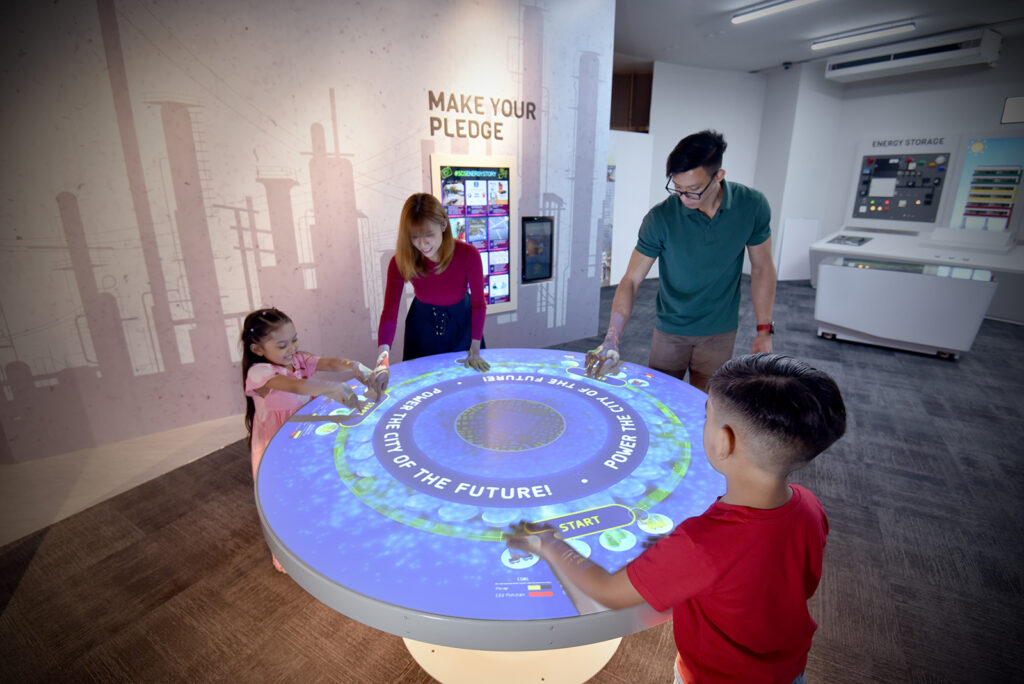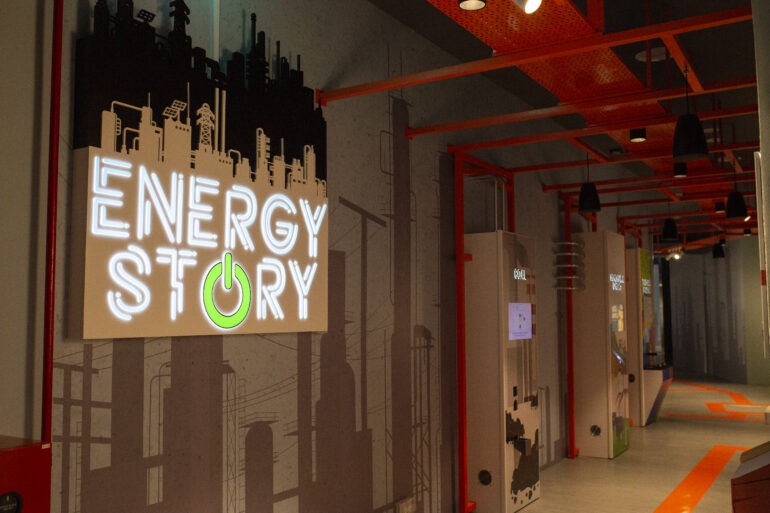Curious to know where Singapore gets her energy? Energy Story at Science Centre Singapore has all the answers and more!
“Woah, I haven’t been back here in x* years!” is what I exclaim to futr’s writer/photographer Marcus as we pull up into Science Centre Singapore (SCS). (*Number omitted lest it’s telling of my age.) Being an out-and-out East-sider means paying a visit to SCS rarely registered as a possible fun activity. Little did I know that besides the nostalgia trip, I’d be in for a couple of hours of good fun.
Why were we here? To check out SCS’s latest exhibit, Energy Story, of course.

A permanent fixture at the Science Centre, Energy Story explores energy sources and conversions, and also maps Singapore’s energy story and journey into the future. What’s iconic about this exhibit is its net-zero status. What does that mean? The energy consumed by the interactive elements is fully matched with an equivalent amount of energy produced, thanks to Renewable Energy Certificates (RECs). Sounds complicated? Let’s have a quick look at what RECs are.
what are Renewable Energy Certificates?
When a renewable energy source generates one megawatt-hour (MWh) of electricity, Renewable Energy Certificates are produced. Sometimes referred to as Renewable Energy Credits, these certificates can be bought or sold. Every REC produced is uniquely identified, and cannot be resold once it’s purchased.

Purchasing RECs is not the same as buying electricity. Rather, multiple sources concurrently generate the electricity we use. In Singapore, these will include using natural gas, solar, regional power grids, and other low-carbon alternatives. Purchasing RECs certifies that the electricity you’re using is from a renewable source.
With that in mind, it was time to take a closer look at the many interactive stations after a quick jaunt through the Phobia2: Know Your Fear and Earth Alive exhibits. Oooh, buttons!
Singapore’s Energy Trilemma.
Jointly presented by SCS, Energy Market Authority (EMA) and SP Group, the exhibition shines a spotlight on the energy ‘trilemma’ — balancing the trade-offs between energy security, competitive prices, and environmental sustainability. Indeed, managing the energy sources that power a nation is a delicate balancing act with little margin for error.

At one interactive station, you’ll get the chance to try powering a nation, and compete with your friends. Choose wisely — there will be different energy sources available to you including biomass, fossil fuel and the ever-controversial nuclear power. Are you able to power a city, keep within your carbon emissions quota, and advance to the next level? (Hint: Picking only the low carbon-emissions options did not help me win the game. 🙁 )
‘with great energy…’
‘…comes great responsibility’ is not how the saying goes, but that doesn’t mean it doesn’t hold water.
Many of the interactive stations are not only educational, but also have real-life applications. The Energy Conservation at Home game is one such example. Players have to select appliances that are both energy saving and within a fixed budget. Should you pick the air conditioner for Singapore’s hot weather, or is a ceiling fan enough? The challenge certainly gave me ideas about what I should invest in for my future home…

While fun, the game also highlights the individual’s role and responsibility in changing how we consume energy. In her speech to kick off the exhibition’s launch, Ms Low Yen Ling, Minister of State in Ministry for Trade and Industry, and Ministry for Culture, Community and Youth, reminds us that we have to be “more mindful than ever” about the impact our energy use has on the environment. Carbon emissions from energy consumption is a key contributor to climate change. From Singapore’s point of view, the concerns are certainly warranted.
As a low-lying island, Singapore is especially vulnerable to rising sea levels. Hence, Energy Reset is a key pillar of the Singapore Green Plan 2030, which will change how Singapore produces and uses energy as we switch to cleaner energy and lower our carbon footprint.
something for the kids, too.
If nation building and home shopping are too-heavy subjects for the kids, don’t worry. They’ll be able to expend some of that never-ending energy pedalling a bike to fully charge up a light bulb, and that’s not the end of it! Quickly pose in front of the UV wall to capture your very own ‘shadow photograph’. They’ll see first-hand how solar panels work too, by reflecting light onto gliders fitted with solar panels to make them fly.

Most of all, kids will be able to learn the importance of energy in our daily lives, without the feeling of being in a classroom! That’s probably my favourite thing about the Science Centre — every excursion in my primary school years never felt like a textbook lesson.
So, head on down to the Science Centre for that dose of nostalgia and interactive fun! Tickets are available at science.edu.sg.
No effort to right climate change is too small! Reduce your carbon footprint in four easy steps!





